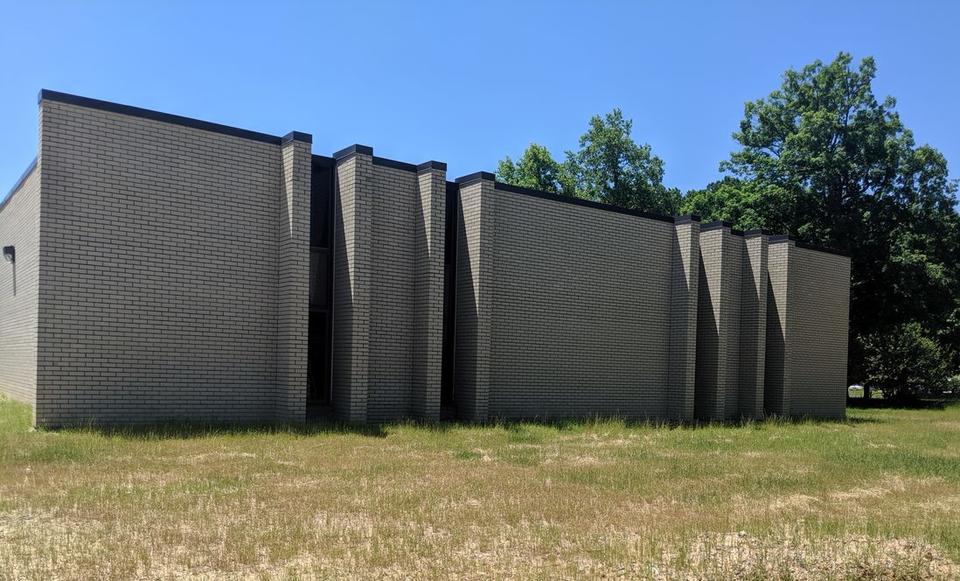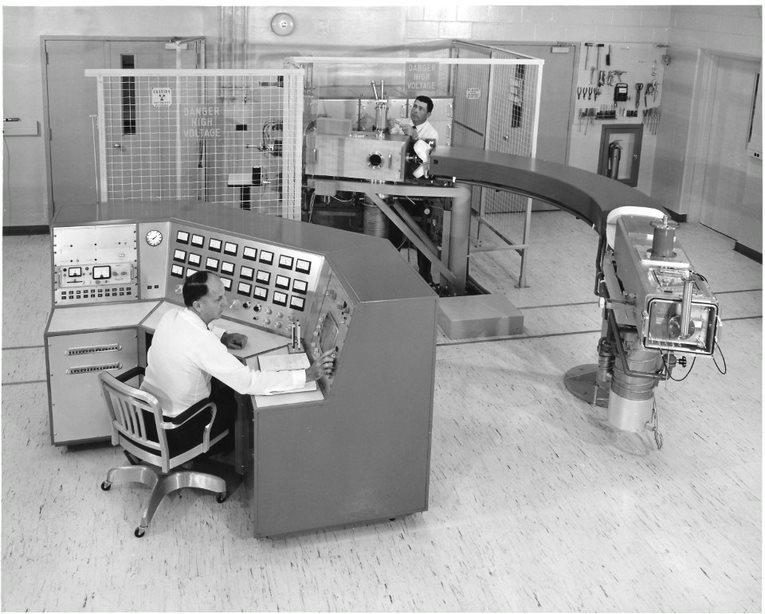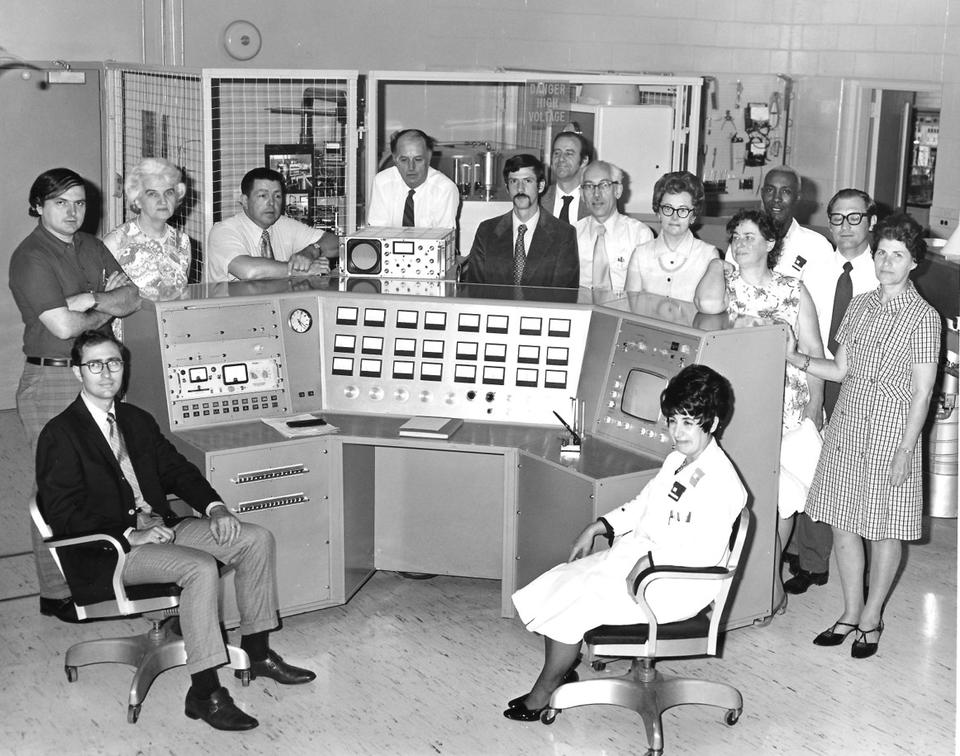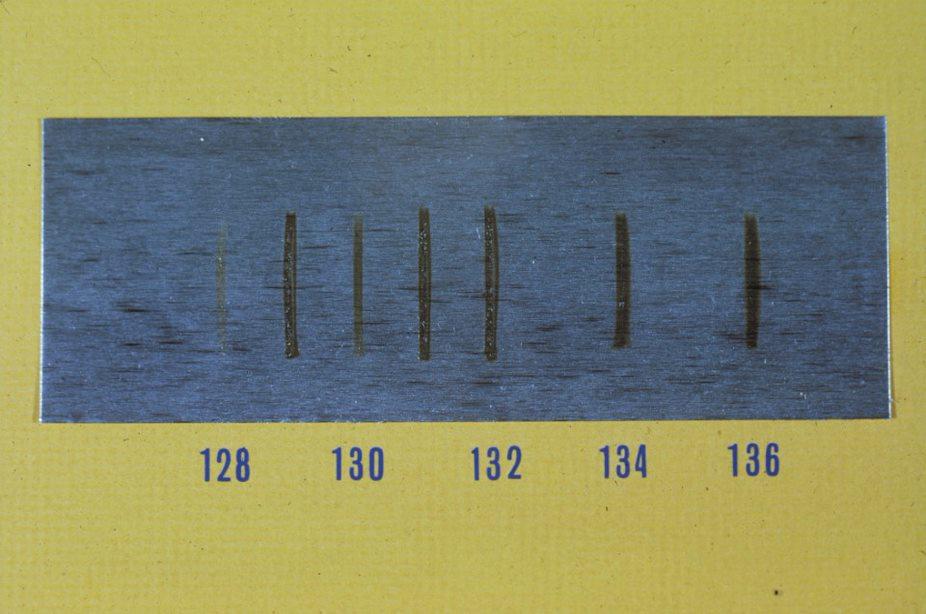Isotope Separator Laboratory Facility
The Isotope Separator Laboratory (ISL) is in the E wing of Building 245. Built in 1967, the isotope separator was used to produce microgram amounts of separated isotopes (atoms of elements with the same number of protons but different numbers of neutrons). Besides the main isotope separator room, the building included two radiochemistry laboratories, two electronic equipment rooms, an office and a mechanical equipment room containing a backing pump, a compressor and a water-cooling system.

A critical application of the isotope separator was the work carried out in the early 1970s to separate the isotopes of the noble gases krypton and xenon. A radioactive mixture of xenon-133 (5.25-day half-life) and xenon-131m (11.93-day half-life) was separated to allow use of pure xenon-133 in preparation of standards for nuclear medicine and environmental radioactivity applications. The radioactive gas xenon-133 was one of the major components of the radioactive emissions following the Three Mile Island nuclear plant failure in 1979. NIST standards of xenon-133 prepared in this facility were used by the Nuclear Regulatory Commission to calibrate the detectors they used at Three Mile Island to survey the extent of the contamination.


The isotope separator instrument was removed around 1980 to provide space for other experiments, including construction of manifolds for handling radioactive gases of krypton-85, xenon-133 and radon-222.


